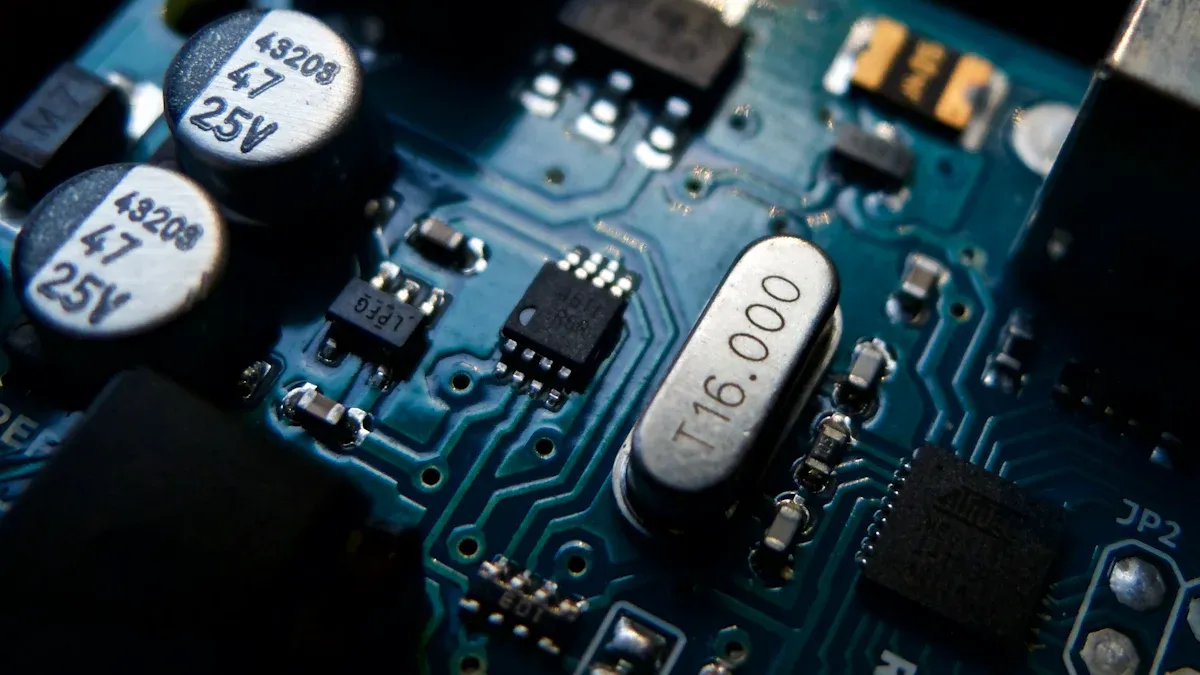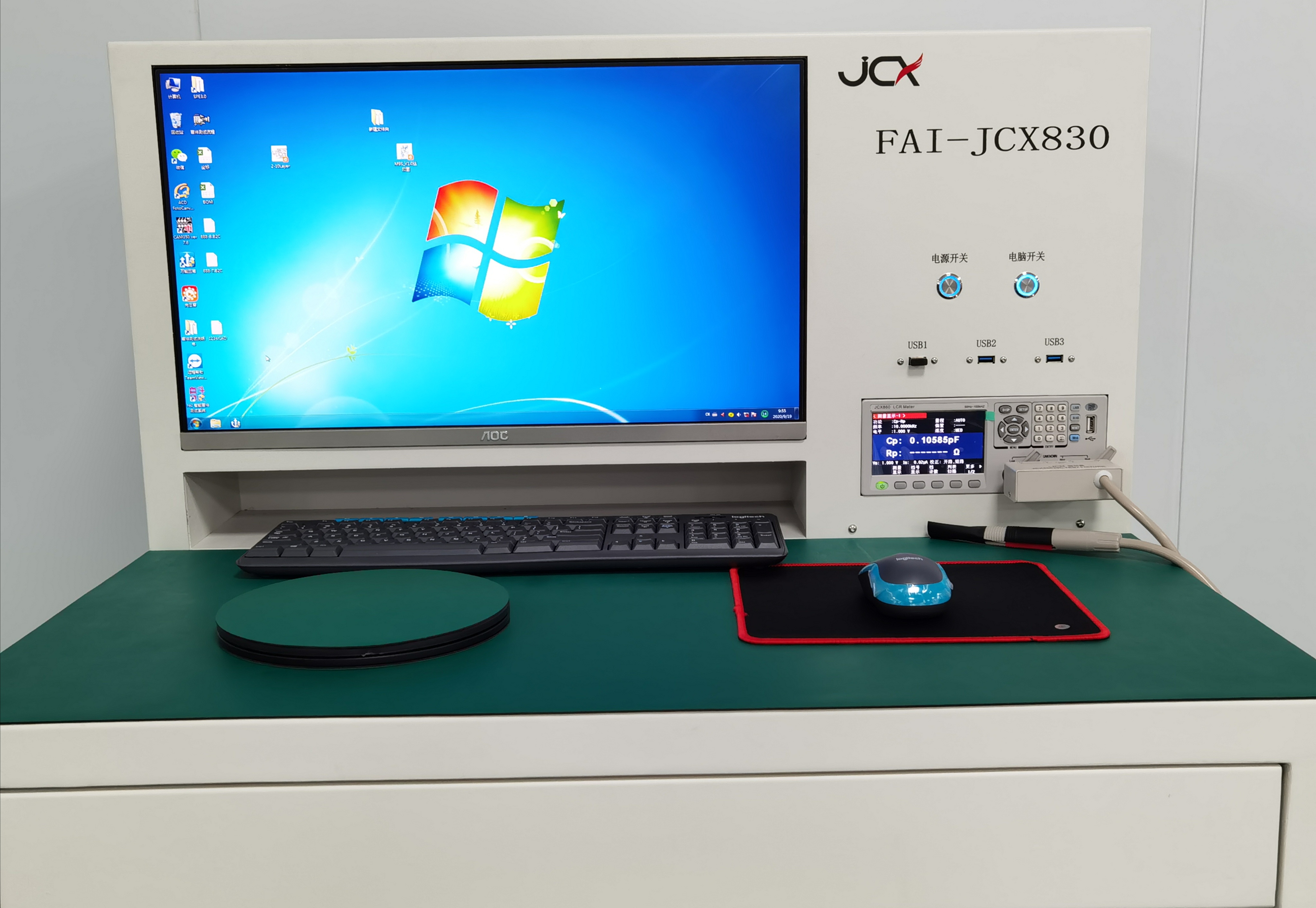What Is SMT PCB Assembly and How Does It Work

SMT PCB assembly utilizes advanced surface mount technology to place components directly onto the printed circuit board, enabling faster production speeds and resulting in more compact and durable products. At LTPCBA, we offer exceptional SMT PCB assembly services designed to meet the modern demand for rapid, precise, and flexible PCB assembly solutions.
Key Takeaways
SMT PCB assembly puts small electronic parts right on the board’s surface. This helps make products faster. It also makes devices smaller and stronger.
The SMT process has several steps. First is solder paste printing. Next is careful part placement. Then comes reflow soldering. Last is a close inspection. These steps help make sure the circuit boards are high quality.
LTPCBA gives expert SMT assembly services. They use advanced machines and strict quality checks. This gives fast, reliable, and affordable PCB solutions for many industries.
SMT PCB Assembly Basics
What Is Surface Mount Technology
SMT PCB assembly puts electronic parts right on the board’s surface. There is no need to drill holes in the board. Machines place smd components very carefully. Solder paste goes on the board first. Then, heat makes the parts stick and connect well. SMT assembly technology helps make devices smaller and lighter. It also lets us build more complex products. Production is faster and more efficient with this method. Most electronics today use smt pcb assembly. LTPCBA uses advanced equipment for smt assembly. This gives customers strong and high-quality pcba solutions.
SMT vs Through-Hole
SMT assembly and through-hole assembly attach parts in different ways. The table below shows how they are not the same:
Aspect | SMT Assembly Technology | Through-Hole Assembly Technology |
|---|---|---|
Assembly Process | Parts go on top of the PCB; no holes needed; uses solder paste and reflow soldering; machines do the work. | Parts go into holes; soldered on the other side; needs drilling and some manual work. |
Component Size | Uses smd parts that are much smaller; fits more parts in less space. | Uses bigger parts; can’t fit as many; makes the board larger. |
Mechanical Strength | Solder holds parts on the surface; good for parts that do not move much. | Leads go through the board; makes a stronger hold; best for connectors and heavy parts. |
Production Efficiency | Fast machines put parts on quickly; saves on labor; good for making lots of boards. | Slower process; needs more work from people; drilling takes more time and money. |
Typical Applications | Used in phones, tablets, and other small electronics. | Used for testing, military, planes, and things that need strong parts. |
SMT pcb assembly has many benefits over older ways. It lets companies make more products and smaller, smarter devices. LTPCBA is an expert in smt assembly technology. They give fast and accurate pcba services to many industries.
SMT Manufacturing Process

The smt manufacturing process uses special machines and careful checks. This makes sure every pcba is made well. Each step builds on the one before it. This helps create strong and good pcb assembly for many uses. LTPCBA follows each step closely. They use the newest smt assembly technology and tools.
Solder Paste Printing
Solder paste printing is the first step in smt manufacturing. Workers get the PCB, stencils, and parts ready. A machine puts solder paste on the PCB pads with a steel stencil. The stencil’s shape, the paste’s quality, and how the machine works all matter. If the paste is not put on right, most smt assembly mistakes can happen here. LTPCBA uses smart solder paste printers and 3D Solder Paste Inspection (SPI) systems. These tools check if the paste is the right amount and in the right place. They find problems early. This careful checking helps LTPCBA make more good pcba boards.
Factor Category | Key Considerations | Impact on SMT Process Accuracy |
|---|---|---|
Stencil Design | Aperture size, thickness, cleanliness | Ensures correct paste volume |
Solder Paste Properties | Viscosity, storage, consistency | Affects flow and adhesion |
Printing Parameters | Squeegee speed, pressure, alignment | Controls uniformity and prevents smears |
Environmental Conditions | Humidity, temperature | Prevents defects like voids |
Printer Alignment | Precision of alignment systems | Prevents misalignment defects |
Note: Solder Paste Inspection (SPI) uses 3D cameras to look for problems. It checks for too much or too little paste, wrong spots, and uneven spread. Finding these early keeps the smt process working well.
Component Placement
After solder paste printing, the next step is component placement. Fast pick-and-place machines put each part on the PCB very carefully. Some machines can place up to 50,000 parts every hour. They can be as exact as ±0.01 mm. LTPCBA uses smart pick-and-place machines with vision checks. This makes sure every part goes in the right spot. These machines can handle tiny parts and big ones too. The smt assembly technology at LTPCBA lowers mistakes and makes work faster.

LTPCBA uses fiducial marks on the PCB to help place parts. They also check the direction of special parts. This step is important for a smooth smt manufacturing process. It helps stop problems later.
Reflow Soldering
When all parts are placed, the smt process goes to reflow soldering. The PCB moves through a reflow oven. The oven heats the board in different zones. The heat goes up slowly at first. Then it stays steady to make the flux work. At the end, it gets hot enough to melt the solder paste. This makes strong joints between the PCB and the parts. LTPCBA uses careful heat settings to stop problems like cold joints, tombstoning, or solder bridges.
Feature | Typical Range (Lead-Free) | Effect on SMT Assembly Quality |
|---|---|---|
Preheating Rate | 1–3°C/sec | Prevents thermal shock |
Soaking Duration | 40–120 seconds | Ensures even heating |
Peak Temperature | Melts solder for strong joints | |
Cooling Rate | ≤4°C/sec | Prevents cracks and warping |
Tip: Good reflow settings and oven checks are needed for great pcb assembly. LTPCBA’s ovens have many zones and sensors to keep heat just right.
Some problems in reflow soldering are tombstoning, solder bridges, and solder balls. LTPCBA’s smt assembly technology and careful checks help stop these problems. This gives better pcba results.
Inspection & Quality Control
The last step in the smt manufacturing process is inspection and quality control. LTPCBA uses many ways to check every pcba:
Solder Paste Inspection (SPI): Checks solder paste after it is printed.
Automated Optical Inspection (AOI): Uses cameras to find missing, wrong, or badly placed parts, and soldering issues.
X-Ray Inspection: Looks inside hidden joints, like BGAs, to find gaps or cracks.
In-Circuit Testing (ICT): Tests if each part and the whole board work right.
Visual Inspection: Skilled workers look for outside problems.
Inspection Method | Focus Area | Effectiveness Notes |
|---|---|---|
SPI | Solder paste volume and alignment | Prevents soldering defects |
AOI | Surface defects, missing/misaligned parts | Fast, accurate for visible issues |
X-Ray | Hidden solder joints, BGAs | Finds internal defects |
ICT | Electrical performance | Verifies board function |
Visual | Cosmetic and large defects | Adds extra assurance |
AOI and X-ray checks work together to find almost all problems. AOI is quick and checks every board. X-ray finds hidden issues. LTPCBA’s quality checks follow strict rules like ISO 9001, IATF 16949, UL, and IPC-A-610. This makes sure every smt assembly meets what customers want.
LTPCBA gives fast help with 24-hour support and quick quotes. Customers can get help before, during, and after the smt process. The company’s strong checks and support make it a trusted choice for great pcb assembly.
SMT Assembly Advantages & Applications
Benefits of SMT
SMT assembly gives many good things to electronics making.
It uses small and light parts, so products can be tiny.
More parts fit on each board because of high density.
Machines do most of the work, which makes things faster and cheaper.
Fewer holes are needed, so making boards takes less time and money.
Shorter leads help the parts work better with electricity.
Devices made with smt assembly last longer and work well in hard places.
SMT assembly lets us put parts on both sides of the board, so designs can be different.
SMT assembly lets companies make smaller and smarter devices. This is why most new electronics use smt assembly.
Limitations of SMT
SMT assembly has many good points, but it also has some problems.
Feature | SMT Assembly | Through-Hole Assembly |
|---|---|---|
Mechanical Strength | Higher, stronger | |
Power Dissipation | Not good for high power | Good for high power |
SMT assembly is harder to fix because the parts are tiny. It is not the best for things that need lots of power or can get hit hard. Through-hole assembly is better for parts that get hot or need to be strong. Sometimes, both ways are used together to make special products.
Common Uses
SMT assembly is used in many areas.
Sector | Typical SMT PCB Applications | Key Benefits |
|---|---|---|
Phones, tablets, laptops, smartwatches, home gadgets | Small size, lots of parts, neat look | |
Car computers, safety systems, music and info screens, EV parts | Tough, safe, works well | |
Factory machines, robots, sensors | Strong, reliable |
LTPCBA does smt assembly for many people, like students and engineers. Their work helps make products with lots of parts and strong performance. Many companies pick LTPCBA for smt assembly in electronics, cars, and factories.
SMT PCB assembly uses simple steps to make good boards:
Solder paste is printed on the PCB pads.
Machines put each part in the right place.
The board is heated so parts stick well.
Special tools check if everything is correct.
LTPCBA Strength | Details |
|---|---|
Certifications | |
On-Time Delivery | 99.7% on-time shipments |
Inspection | AOI, X-ray, SPC, and more |
If you want to know more or need help, you can visit LTPCBA’s website, read their blogs and FAQs, or talk to their team.
FAQ
What is the main difference between SMT and through-hole assembly?
SMT places parts on the board’s surface. Through-hole puts leads through holes. SMT works faster and fits more parts in less space.
How does LTPCBA ensure quality in SMT assembly?
LTPCBA uses AOI, X-ray, and in-circuit testing. Skilled workers check every board. The company follows ISO, IATF, and UL standards.
Can SMT assembly handle both small and large production runs?
Yes, SMT assembly works for prototypes and mid-volume runs.
LTPCBA supports both small batches and larger orders with fast turnaround.
See Also
Understanding SMT And DIP Assembly Processes For PCBA
Common Techniques And Workflow In SMT Assembly Procedures
Effective Ways To Clean PCB Boards Following SMT Assembly
Key Technical Challenges For VIPPO PCB Boards During SMT Assembly
Combining SMT And DIP Methods For Enhanced Mixed Technology PCBs
